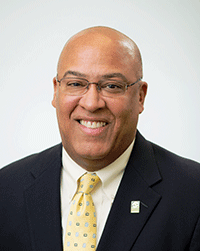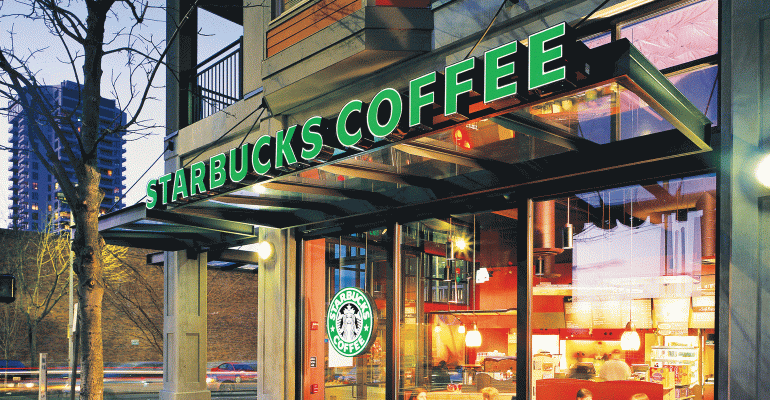Starbucks has been in the national spotlight this week after two black men were arrested in a Philadelphia Starbucks last Thursday for trespassing, sparking allegations of racial profiling, outrage on social media and protests at the site of the incident.
In the days following the arrests, Starbucks made several high-profile moves to address the situation.
CEO Kevin Johnson made two public statements over the weekend in which he apologized on behalf of the company and called the incident “reprehensible.” He also flew to Philadelphia and met Monday with the two men, who had been released and were not charged. On Tuesday the company announced it would temporarily close its 8,000 company-owned stores for racial bias education sessions on May 29.
That same day, Starbucks released a joint statement with the attorney of the two men arrested last week saying the company and the men have engaged in “constructive discussions.”
“The conversation continues today about how this painful incident can become a vehicle for positive social change,” the statement said.
 Gerry Fernandez, founder and president of the Multicultural Foodservice & Hospitality Alliance, an organization whose mission is to educate and advise foodservice companies on matters of diversity, said Starbucks responded to the crisis well, noting that the chain’s national prominence presents an opportunity to open a discussion about larger issues at play.
Gerry Fernandez, founder and president of the Multicultural Foodservice & Hospitality Alliance, an organization whose mission is to educate and advise foodservice companies on matters of diversity, said Starbucks responded to the crisis well, noting that the chain’s national prominence presents an opportunity to open a discussion about larger issues at play.
Starbucks, which is a member of the MFHA, has a credibility advantage because it has a history of community involvement and addressing tough social and political issues at a corporate level, he said. Even the most proactive and equality-focused organizations can be faced with crises when employees take actions that are not in sync with company values.
According to a survey released Wednesday by YouGov BrandIndex, Starbucks’ consumer perception score had dropped to its lowest level since November 2015.
Fernandez spoke with Nation’s Restaurant News about four key lessons that companies could take away from the week’s events.
1. Speak from the highest levels of the company.
One notable aspect of the Starbucks situation is how vocal the CEO has been, which sends a strong statement about where a company stands, Fernandez said.
“Not all CEOs are comfortable speaking on these issues,” he said. “They speak through PR folks because they don’t feel comfortable speaking on these issues or they don’t recognize the value of a statement coming from the top.”
Johnson, who has been Starbucks’ CEO for a year, has been making the rounds on national news channels to inform the public that he plans to fix what he called a “reprehensible” incident.
Starbucks executive chairman Howard Schultz, who joined Johnson in Philadelphia last weekend, also released a statement Tuesday, saying the company would “learn from our mistakes.”
2. Put your money where your mouth is.
“We need to spend more on training,” Fernandez said, noting that employee education is often one of the first items to be cut from budgets.
“And companies need to do more than just mandatory, sit-in-front-of-a-computer training,” he added.
“A lot of people don’t think it’s germane to the bottom line, but when you get sued you find out just how germane it is,” he said. “Companies shouldn’t have to get their fingers slammed in the door to figure out the importance of training,” he said.
Fernandez said effective training programs include education on unconscious bias and help employees recognize how their own experiences shape their actions — even when they don’t realize it.
“A lot of our reactions are based on bias at the subconscious level, not intentional,” he said.
“Every person brings their own history and collective of life experiences. It’s hard as a company to be responsible for managing that.”
Starbucks’ May 29th day of training will involve temporarily closing thousands of stores for sessions with 175,000 employees to address “implicit bias, promote conscious inclusion, prevent discrimination and ensure everyone inside a Starbucks store feels safe and welcome,” the company said in a statement.
MarketWatch estimated that the cost to temporarily close the stores in the afternoon of May 29 for the training would cost the company about $12 million in lost revenue.
3. Build diverse teams, particularly in management.
Training and advancing women and people of color to highest levels of the industry is essential to drive positive change, Fernandez said.
“The top is very white,” he said. “There are very few women and very few people of color. You don’t have the perspectives at every level and people who can advocate for investing in training.”
Decreased turnover and higher customer engagement are two results of increased diversity, he added.
It can also help companies avoid missteps.
“How many mistakes would have been avoided if there was a woman in the room, or a person of color in the room to say, ‘Wait, you can’t do that.’?” he asked.
4. Don’t be afraid to take a stand
Restaurants have an opportunity — and an obligation — to be more proactive on issues of diversity and inclusion, he said.
“We over-index for women, we over-index for people of color,” he said. “We need to be on the leadership edge of this issue,” he said.
“Starbucks is in the cross-hairs because it’s big brand and people can draw attention to the issue by targeting a big brand,” he said. “If this was happening at Johnny’s Coffee Shop down the street we wouldn’t be hearing about it, but the same issues would be going on.”
Nancy Luna contributed to this report.
Contact Christi Ravneberg at [email protected]





